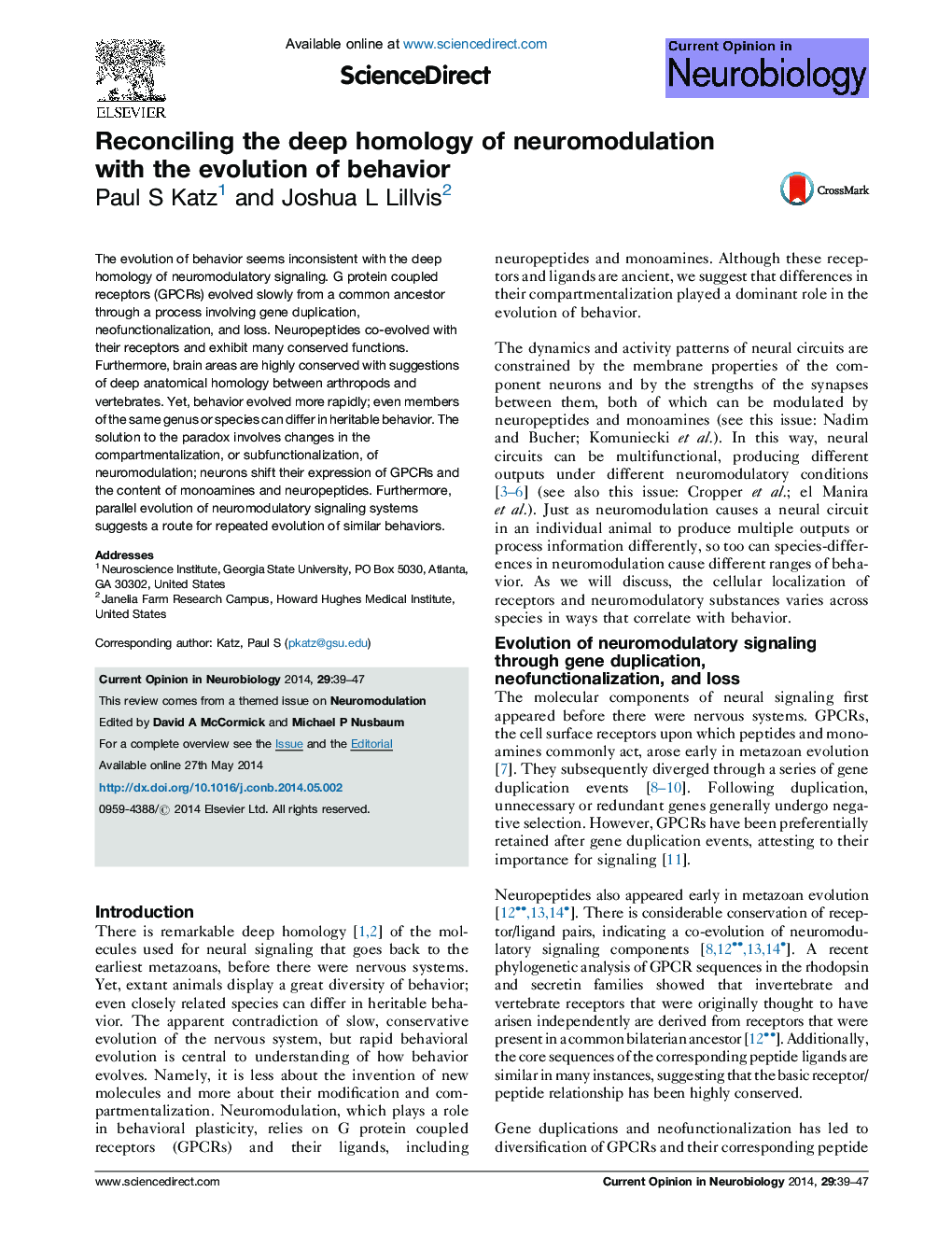| کد مقاله | کد نشریه | سال انتشار | مقاله انگلیسی | نسخه تمام متن |
|---|---|---|---|---|
| 4334193 | 1614520 | 2014 | 9 صفحه PDF | دانلود رایگان |
• Neuromodulation mediated by G protein coupled receptors (GPCRs) alters behavior.
• GPCRs evolved slowly through gene duplication, neofunctionalization, and loss.
• Behavior evolved rapidly through differential compartmentalization of signaling.
• Similar behaviors evolved via parallel changes in neuromodulation.
The evolution of behavior seems inconsistent with the deep homology of neuromodulatory signaling. G protein coupled receptors (GPCRs) evolved slowly from a common ancestor through a process involving gene duplication, neofunctionalization, and loss. Neuropeptides co-evolved with their receptors and exhibit many conserved functions. Furthermore, brain areas are highly conserved with suggestions of deep anatomical homology between arthropods and vertebrates. Yet, behavior evolved more rapidly; even members of the same genus or species can differ in heritable behavior. The solution to the paradox involves changes in the compartmentalization, or subfunctionalization, of neuromodulation; neurons shift their expression of GPCRs and the content of monoamines and neuropeptides. Furthermore, parallel evolution of neuromodulatory signaling systems suggests a route for repeated evolution of similar behaviors.
Journal: Current Opinion in Neurobiology - Volume 29, December 2014, Pages 39–47
